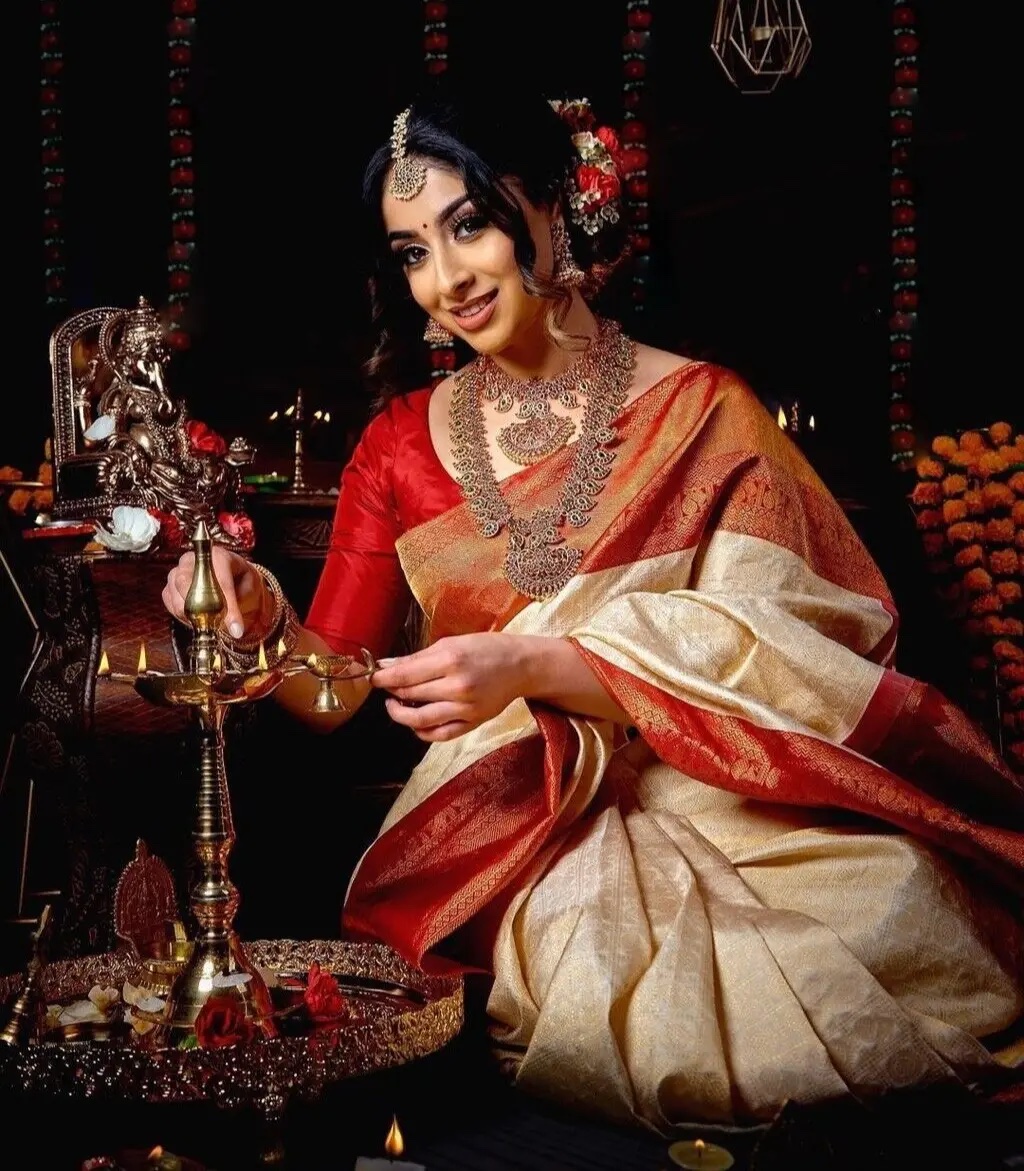
Beyond the Bride: Significance of Gifting Sarees in Indian Wedding Ceremonies and Family Traditions
Indian weddings are an amalgamation of everything — cultures, modernity, traditions and fertile symbolisms. The embellished ornaments in wedding sarees often symbolize family, regeneration, ancestral blessing and traditions.
But weddings are beyond the bride, it is also about everyone that attends the wedding. Heaps of gifts are given, and one can find loads of sarees in them. The bride often redistributes these sarees among her friends, sisters and relatives. Such customs help in strengthening bonds within the family.
Heritage, for Indians, is a non-negotiable. Thus, almost every traditional wedding is filled with guests in traditional attires and jewellery. The panorama view of a wedding mandap is always filled with food, frolic, family and friends. Weddings in India transcend beyond garments; they unite every generation through drapes.
The Tradition of Saree Gifting
Although in modern Indian weddings, many invitation cards mention not bringing in gifts, Indian weddings are incomplete without gifts! — that’s a known fact. In many Indian traditions, gifts are considered auspicious tokens in marriages. A wedding is a communion between two souls in the presence of the community. Therefore, any token from them is considered lucky and a blessing. Often, the bride is showered with gifts and that too sarees.
The whole family of the bride gets gifts from the bridal queen herself. Gifting sarees to one another includes a lot of positive emotions like love, well-wishing, affection and blessing.
Bridal Trousseau
The bride’s trousseau often takes up an entire room! Of course, it contains a wide collection of sarees that are given to her from the groom’s side and other family members’ gifts as essentials to initiate her new life. These are often the best of the lot and chosen as per the bride’s taste, family heritage and aesthetics.
On previous occasions, she also gets a generational heirloom passed down to her or even a generational piece of jewelry. This symbolizes her empowerment in her new family. She is trusted wholeheartedly with the antique craftsmanship and sentimental value of the piece of art.
Ceremonial Significance
Gifting a saree is necessary in ceremonies such as Haldi, Mehendi or Sagaai. Or rather, we love to gift these! It is normal for the groom’s family to gift the bride with jewellery and sarees for her engagement day.
Female relatives, including aunts, grandmothers and elder sisters, tend to gift golden ornaments and sarees. The gift of Gold is unsaid, but it is universally known. It is counted auspicious.
Post-Wedding Traditions
Vidaai comes later; first comes the gifting sessions, feasting, taking blessings of the elders and other various post-wedding rituals.
The ‘mooh dikhai’ ceremony, also called ‘subho dristi’ (Bengali), is when the groom sees the face of the bride on the mandap. The ghoonghat (veil) of the saree is lifted to reveal the glowing face of the new bride.
Handloom and Craftsmanship
Certain sarees are highly linked with traditional craftsmanship, such as Banarasi, Kanjeevaram, Chanderi, and Paithani. When these sarees are gifted, they hold very special values and are often seen as family heirlooms. The heritage attached to these sarees is seen to match up to the heritage attached to the families that come together under the holy matrimony.
Symbolism and Blessings
Every saree comes with tons of blessings wrapped under symbolisms. These symbolisms can be seen in motifs, statement colours, designs etc. These often carry auspicious intent and wishings towards a happy married life, abundance, fertility and longevity of both partners.
With evolving times, the bonds of togetherness are manifesting itself in many ways. The modern world celebrates love for all. We have bridged the gap between tradition and modernity with our immense attachment to saree gifting as a form of love language.



